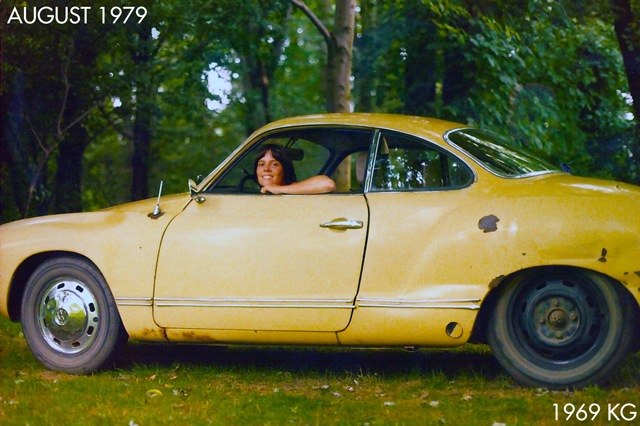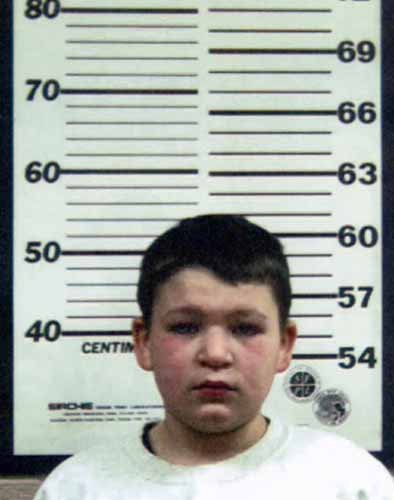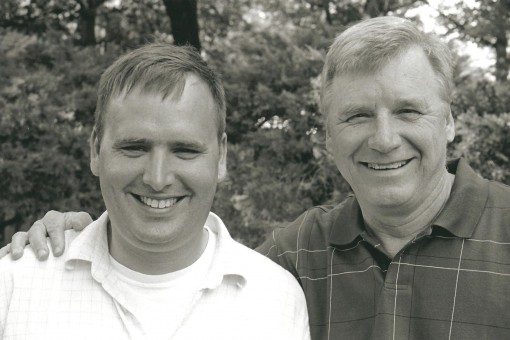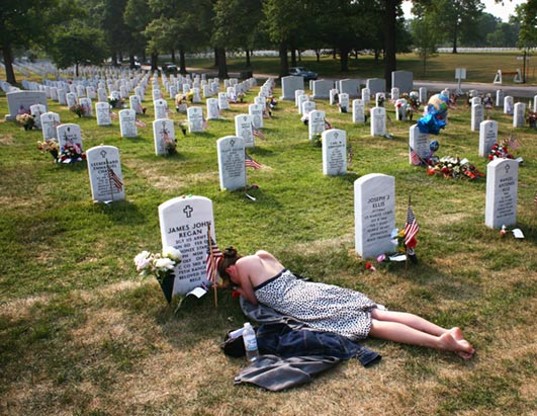
From our house to your's where every you may be-- Merry Christmas and Happy New Year!

From our house to your's where every you may be-- Merry Christmas and Happy New Year!
The first car my wife, Patti, bought on her own was a 1969 Karmann ghia that was in awful condition. It was all she could afford in 1979 when she was fresh from college and starting a family with her first husband, Steve, who later died from complications caused by cancer. I noticed one day that she kept a photo in her office that showed her sitting proudly in that piece of junk. The photo was taken in August 1979.
So Tony, my son who loves cars, and I decided to surprise her recently with a completely restored yellow Karmann ghia. It’s a 1970 model.
Sometimes in life, as the old saying goes, “You need to stop and smell the roses.” Or, in this case, the exhaust.
Happy Labor Day!


When the 14 year-old old boy came home from school and found his mother on the floor badly beaten and unconscious, he decided to do something. He took a pistol from a drawer, marched into his mother’s bedroom where his drunken step-father had passed out on the bed, and fired point blank into the man’s skull killing him. Arrested and charged as an adult, the youth was taken to an adult jail to await trial.
The boy had been there only three days when defense attorney Bryan Stevenson met him. He was so traumatized that he could not answer any of the lawyer’s questions. He’d been repeatedly sexually assaulted — so many times in that three day period in jail that he’d lost count of how many men had abused him. All the boy did for two hours was sob as Stevenson held him. 
This tragic story was one of several that Bryan Stevenson described in an impassioned speech that he gave last week during an Advanced Judiciary Academy conference at the University of Illinois in Champaign/Urbana. I’ve written about Bryan before on my blog. He’s an inspirational advocate.
Bryan and I were invited to speak to the Illinois judges about how wealth and poverty influence our criminal justice system. We’d been invited to lecture because of my book, CIRCUMSTANTIAL EVIDENCE: Death, Life and Justice in a Southern Town. For those of you who might not have read it, CIRCUMSTANTIAL EVIDENCE is a true story about the murder of a popular, white teenager in the Alabama town that inspired the novel, TO KILL A MOCKINGBIRD. A poor, uneducated, black man named Walter “Johnny D.” McMillian was convicted of the killing which happened inside a dry cleaners on a busy Saturday morning. McMillian was sentenced to death after two witnesses testified that they’d seen his truck parked outside the cleaners at the time of the murder and another witness claimed he actually see McMillian standing over the dead girl during a robbery. It seemed as if McMillian had been caught red handed.
But after Stevenson began investigating the case, a different picture emerged. Both witnesses who’d claimed to have seen the truck recanted their stories. Both had received reward money in return for testifying. The eyewitness who swore that McMillian had murdered the girl was proven to be a liar. Even worse, Stevenson discovered that the prosecution had hidden crucial evidence that proved McMillian was innocent. During the murder, he had been at his home miles away helping host a fish fry. Two law enforcement officers had stopped there that day but had failed to come forward to substantiate his alibi. Put simply, McMillian had been framed.
Although Bryan proved McMillian was innocent, Alabama officials refused to free him. It took a 60 Minutes segment about the case to shame local and state officials into releasing an innocent black man from death row.
I spoke first at last week’s conference and described the murder and investigation. Bryan spoke after me about the case but quickly moved to such broader issues as the number of persons with mental illnesses now being incarcerated and his latest campaign to stop pre-teens and teenagers under age fifteen from being charged as adults when they commit crimes. Many of these children are sentenced to life in prison. His work as the executive director of the Equal Justice Initiative prompted the judges in the audience to do something that Judge Susan Hutchinson, who helped organize the academy, said she’d never witnessed before.
They gave him a standing ovation.

The featured speaker at the awards dinner at our local chapter of the National Alliance on Mental Illness was listed in the program under the name: EARLEY. But it was not me.
It was my son, the person whom many of you have come to know from my book: Crazy: A Father’s Search Through America’s Mental Health Madness, by the name MIKE. The NAMI meeting was the first time that he has ever spoken in public and he got a much deserved standing ovation after he’d described his journey to recovery.
I am tremendously proud of him. Like so many others, our family has been through a roller coaster of events and emotions since 2001 when my son was first diagnosed with a severe mental illness. He’s been arrested and shot with a taser. There have been court hearings, four major breakdowns, repeated hospital stays, hours of therapy, angry words — so many angry words — even feelings of hopelessness and despair.
But for the past three years, he has been doing fantastic! He has been able to manage the symptoms of his illness. He is in RECOVERY and he is one of my heroes!
There are many reasons for his recovery, but he deserves the most credit. He has worked hard to get better. Fortunately, he had the expert guidance of a tremendous case manager. My son found a medication that helped him. And he had access to other crucial services that he needed!
I am blessed. I am telling you this to give you HOPE for your loved one. People do get better! But why am I telling his story, when his own words can tell it better than me?
Here are excerpts from his speech. When you read them, you will understand why I am proud and fortunate to have such a wonderful son. I know many of you are struggling. Don’t give up. There were times when I didn’t think we would get where we are today.
Memorial Day honors all Americans who died fighting to defend our country. Among them is my uncle, George “Buddy” Patterson, who died during World War Two at age nineteen. He is buried at the Gettysburg National Cemetery because my grandparents lived nearby in Pennsylvania. My parents adopted Buddy when he was a baby. He had been abused and abandoned by his birth parents. My grandmother spent months nursing him back to health. Like most men at the time, including my father, Buddy volunteered after the attack on Pearl Harbor caused the U.S. to enter the war. Fortunately, my father was not injured, but Buddy did not survive his service in Europe.
Fortunately, my father was not injured, but Buddy did not survive his service in Europe.
Another fallen soldier whom I will remember today is one of my high school classmates, Randy Lundy. He was one of the most popular students in my school and for a good reason. He was an outstanding athlete, excellent student and great teenager with a bright future. He was sent to Vietnam where he was killed by friendly fire.
Two blocks from our house, a family has erected a three foot white cross on the front lawn of their home and encircled it with miniature flags. I do not know this family but the parents have attached a photograph of their young son on the cross and noted his rank and date of death in the Gulf.
Their “Buddy” has died too.
In 2000, President Bill Clinton passed a resolution calling for a national moment of remembrance on each Memorial Day to honor those who paid the ultimate sacrifice for our freedoms.
Join me in pausing at 3 p.m. today to remember those who have perished.
What do a beauty pageant winner, a retired state probation officer, a former homeless man, and a grieving father have in common?
Those of you who read my blog regularly can easily guess the answer. All four have had their lives impacted by mental illnesses. But that is not why I am writing about them. I want to share their stories with you because of how they have chosen to react to the hurdles they’ve encountered.
"Pete Earley is a fair-minded reporter who apparently decided that his own feelings were irrelevant to the story. There is a purity to this kind of journalism..."
- Washington Post"A former reporter, Mr. Earley writes with authenticity and style — a wonderful blend of fact and fiction in the best tradition of journalists-turned-novelists."
- Nelson DeMille, bestselling author"A terrific eye for action and character. Earley sure knows how to tell a story. Gripping and intelligent."
- Douglas Preston, bestselling co-author of The Relic

Pete Earley is the bestselling author of such books as The Hot House and Crazy. When he is not spending time with his family, he tours the globe advocating for mental health reform.
As a former reporter for The Washington Post, Pete uses his journalistic background to take a fair-minded approach to the story all while weaving an interesting tale for the reader.
Sign up to receive blog posts and the latest from Pete including new books and resources.
Copyright © 2025 · Education Child Theme on Genesis Framework · WordPress · Log in